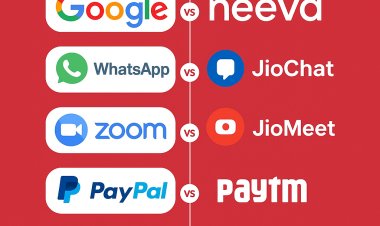Overcoming the Biggest Challenges in Reaching Your Target Audience
Explore the most significant challenges businesses face in reaching their target audience and discover effective strategies to overcome them, ensuring your marketing efforts resonate and drive success.

Reaching a target audience effectively is a critical goal for any business, but it often comes with a host of challenges. These challenges can vary widely depending on the industry, the specific audience, and the resources available. However, some common hurdles tend to arise across different contexts. Here are the biggest challenges businesses face in reaching their target audience and strategies to overcome them.
1. Identifying the Target Audience
One of the fundamental challenges is accurately identifying the target audience. Many businesses struggle to define who their ideal customers are, which can lead to broad, unfocused marketing efforts.
Solution: Conduct thorough market research to understand the demographics, psychographics, and behavioral characteristics of your potential customers. Use tools like surveys, focus groups, and data analytics to gather insights. Creating detailed buyer personas can help tailor your marketing strategies more effectively.
2. Understanding Audience Needs and Preferences
Even when businesses identify their target audience, understanding their needs, preferences, and pain points can be difficult. Misunderstanding these elements can lead to irrelevant messaging that fails to resonate.
Solution: Engage with your audience directly through social media, forums, and customer feedback channels. Listen actively to their concerns and preferences. Leveraging AI and data analytics can also provide deeper insights into customer behavior and trends.
3. Reaching a Diverse Audience Across Multiple Channels
In today’s digital landscape, audiences are fragmented across various platforms and channels. Each segment of your audience might prefer a different medium, making it challenging to reach everyone effectively.
Solution: Develop a multi-channel marketing strategy that includes social media, email, content marketing, SEO, and paid advertising. Ensure your messaging is consistent but tailored to the nuances of each platform. Use analytics to track which channels perform best and allocate resources accordingly.
4. Content Overload and Information Fatigue
Consumers are bombarded with content daily, leading to information fatigue. Breaking through the noise and capturing attention is a significant challenge.
Solution: Focus on quality over quantity. Create compelling, high-value content that addresses your audience's specific needs and interests. Utilize storytelling and visual content to make your messages more engaging. Personalization can also help make your content stand out.
5. Keeping Up with Technology and Trends
The digital marketing landscape is continually evolving with new technologies and trends. Staying updated and adapting to these changes can be overwhelming.
Solution: Invest in continuous learning and development for your marketing team. Follow industry leaders, attend webinars, and read up on the latest trends. Utilizing marketing automation tools can also help streamline processes and keep your strategies up-to-date.
6. Budget Constraints
Limited budgets can restrict the reach and effectiveness of marketing campaigns, especially for small businesses and startups.
Solution: Prioritize cost-effective marketing strategies such as social media marketing, content marketing, and SEO. Use data to focus on the channels that deliver the highest ROI. Consider collaborative marketing efforts, like partnerships or influencer marketing, to extend your reach without significantly increasing costs.
7. Measuring Marketing Effectiveness
Determining the effectiveness of marketing efforts and their impact on reaching the target audience is often a challenge. Without proper measurement, it's hard to know what's working and what isn't.
Solution: Implement robust analytics and tracking mechanisms from the outset. Use tools like Google Analytics, social media insights, and CRM software to gather data. Establish clear KPIs and metrics aligned with your goals. Regularly review and adjust your strategies based on performance data.
8. Building and Maintaining Customer Trust
Establishing and maintaining trust with your audience is crucial but can be challenging, especially in industries with high competition or skepticism.
Solution: Be transparent and authentic in your communications. Deliver consistent value and follow through on promises. Encourage and showcase customer reviews and testimonials. Engaging in corporate social responsibility (CSR) initiatives can also enhance your brand’s trustworthiness.
9. Adapting to Changes in Consumer Behavior
Consumer behavior is constantly changing, influenced by various factors such as economic shifts, technological advancements, and cultural trends. Keeping up with these changes and adapting marketing strategies accordingly is challenging.
Solution: Stay agile and responsive. Regularly update your market research and be ready to pivot your strategies as needed. Implementing a feedback loop can help you quickly identify and react to changes in consumer behavior.
10. Competing for Attention in Saturated Markets
In saturated markets, standing out from competitors and capturing your audience's attention can be extremely difficult.
Solution: Focus on your unique selling proposition (USP) and highlight what sets you apart from competitors. Invest in brand differentiation through innovative campaigns and exceptional customer experiences. Engaging storytelling and strong brand narratives can help create a memorable impression.
Conclusion
Reaching your target audience is a multifaceted challenge that requires a strategic, well-rounded approach. By understanding and addressing these common obstacles, businesses can develop more effective marketing strategies that resonate with their audience and drive success. Staying informed, being adaptable, and consistently delivering value are key components in overcoming these challenges and achieving marketing goals.




























